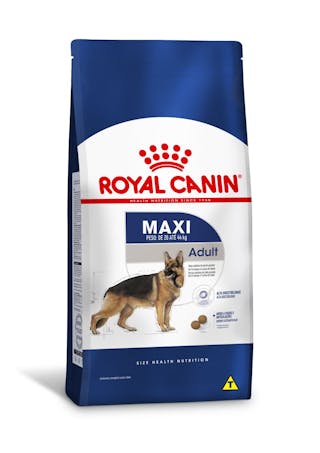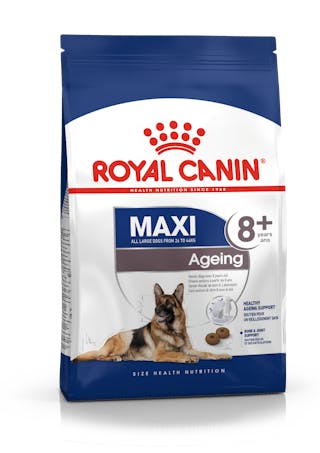
Let's talk Belgian Shepherds
Often in motion, the Belgian Shepherd Groenendael is a long-haired, hard-working sheepdog in constant need of a job - sheep optional. And while physical exercise is paramount, mental exercise is just as important for this highly intelligent breed. They can be trained to learn almost anything, thus excel in agility sport where their smarts, as well as elegant black coats, can be on full display.
Official name: Belgian Shepherd Groenendael
Other names: Belgian Shepherd, Groenendael, Belgian Sheepdog
Origins: Belgium

| Drooling tendencies |
|
Warm weather? |  |
| Grooming needs | |
Cold weather? | |
| Shedding level | |
Suited to apartment living? | |
| Barking tendencies |  |
Can stay alone?* | |
| Energy Level* | High | Family Pet?* |  |
| Compatibility with other pets |  |
* We advise against leaving pets alone for long stretches. Companionship can prevent emotional distress and destructive behaviour. Speak to your veterinarian for recommendations.
Every pet is different, even within a breed; this snapshot of this breed specifics should be taken as an indication.
For a happy healthy and well-behaved pet, we recommend educating and socializing your pet as well as covering their basic welfare needs (and their social and behavioral needs.
Pets should never be left unsupervised with a child.
Contact your breeder or veterinarian for further advice.
All domestic pets are sociable and prefer company. However, they can be taught to cope with solitude from an early age. Seek the advice of your veterinarian or trainer to help you do this.


| Baby age | Birth to 2 months |
| Puppy age | 2 to 15 months |
| Adult age | 15 months to 5 years |
| Mature age | 5 years to 8 years |
| Senior age | From 8 years |
1/7
Get to know the Belgian Shepherd Groenendael
All you need to know about the breed
The Belgian Shepherd Groenendael is quite the dog: Highly intelligent with a focused yet pleasant manner, this is a breed with a long tradition of herding who thrives in the role. This natural-born instinct means running around isn’t just fun for the Groenendael, it’s a requirement.
The Belgian Shepherd Groenendael has staked their claim as a guard dog extraordinaire, bursting with energy that should be met with daily sojourns or true work on a farm or ranch. Not an apartment dweller for sure, small spaces would drive the breed bonkers. A suburban dwelling can work but make sure any outdoor space for this breed is well-fenced in. The Belgian Shepherd Groenendael is possibly not a breed for first-time dog owners - not that they’re hard to handle, but just a handful.
Their other outstanding asset is a super shiny coat that’s should be exclusively black, with the occasional smattering of white patches on their chest, feet, chin, and muzzle. Be forewarned: Seasonal shedding of those beautiful tresses - twice a year - will happen. Just make sure to have a good grooming brush at the ready.
Not huge fans of a lot of alone time, Belgian Shepherd Groenendaels possess an unbending devotion to their owners. This regal breed is a people-pleaser for sure.

2/7
2 facts about Belgian Shepherd Groenendaels
1. Best being in the mix
If devotion could be measured, the Belgian Shepherd Groenendael’s would be off the charts. This is one dog that needs to be needed, finding worth through work and expecting it to come from you.
2. Always herding - anything
Because of the Belgian Shepherd Groenendael’s history as a herder, the breed will usually chase most everything that moves - including cars and people. Keep the gate well-locked at home and hold fast to your dog when out in public.
History of the breed
The Belgian Shepherd Groenendael was developed in Belgium in 1893 by breeder Nicolas Rose who named the variety after Chateau Groenendael, his estate south of Brussels. There are four types of Belgian Shepherds - the Groenendael, Tervuren, Laekenois, and Malinois, the differences coming in coat colour and hair length with the dogs anatomically otherwise the same. The Belgian Shepherd Dog Club was founded in 1891 with the local rise of this very popular breed in the late 1800s.
By the early 1900s, the Belgian Shepherd Groenendael was used by Belgian customs officers on the border and utilised in other major cities such as New York and Paris by police.
The sturdy dog was also employed by armed forces during World War I to carry machine gun carts and even to pull ambulances! The Belgian Shepherd Groenendael continued their work into World War II, and the Belgian Sheepdog Club of America was founded in 1949.

4/7
From head to tail
Physical characteristics of Belgian Shepherd Groenendael
1. Ears
Triangular ears stand erect in good proportion to the head
2. Head
Head carried high signifies very alert breed, black nose, long, somewhat pointed muzzle
3. Body
Strong, muscular body, solid but not at all hulking
4. Tail
Bushy tail held low when relaxed; raised when active and slightly curled
5. Coat
Signature trait of black lustrous coat with straight, medium-length hair, very dense undercoat
5/7
Things to look out for
From specific breed traits to a general health overview, here are some interesting facts about your Belgian Shepherd Groenendael
6/7
Caring for your Belgian Shepherd Groenendael
Grooming, training and exercise tips
The signature trait of the Belgian Shepherd Groenendael: their shiny black coat. The color is always the same, short of white patches that can appear on their feet, legs, and chest, the breed’s glorious onyx color makes them stand out from the pack. The double coat needs brushing once, max twice, a week. To look at it, one would assume shedding galore; ironically, the breed does not shed a lot, a shocker for sure. Once a year, they will completely though, as a new coat grows in. When this happens, brush their coat profusely to get rid of all the dead hair. The Belgian Shepherd Groenendael only needs to be bathed a few times during the year, depending on what they’ve gotten into, of course.
With their pleasurable expression and willing spirit, it’s hard to believe that the Belgian Shepherd Groenendael could be hesitant but they are. They look so friendly! And indeed they are, but with those they know first, those they don’t second. The breed will need time to warm up to newcomers who enter their circle. This is a dog that craves attention because it’s bred to answer to commands and requests. In other words, give them direction and they will be more than agreeable to carry out said task. The Belgian Shepherd Groenendael also also needs a patient albeit stern hand when it comes to discipline. Their extremely high intelligence though means they take training well, and will return with great behaviour in spades.
Exercise is the Belgian Shepherd Groenendael’s middle name and time spent out in the field is pure bliss for this super active dog. They do best when given a job to do, and their strong body means they can help with physical labor around the house or farm. Bred as a herding dog in Western Europe, the Groenendael has been used to pull carts, wagons, and other vehicles, such is the level of their strength. Motion - even multitasking - is their modus operandi. The dog is very smart and can be taught to tackle almost anything as well, which, coupled with their eager disposition, is a winning combination. This is a breed that also does extremely well when it comes to agility and sporting competitions, enjoying the competitiveness of it all, as well as the many obstacles to overcome.
All about Belgian Shepherd Groenendaels
Assertive, yes; aggressive, no. On the contrary, the breed is quite loyal and sweet-natured. They are perceptive and very much want the companionship of their owner. People-oriented and protective, the Belgian Shepherd Groenendael does best when occupied and part of the gang, human or dog.
The breed hails from a long line of herding dogs commonly found in Western Europe. Highly intelligent, earnest, and gentle, this is a dog that aims to please and is most content when busy.
Read More about Breeds


Why is my dog losing its hair?

Dog dandruff and dry skin
Sources
1 - Veterinary Centers of America https://vcahospitals.com/
2 - Royal Canin Dog Encyclopaedia. Ed 2010 and 2020
3 - Banfield Pet Hospital https://www.banfield.com/
4 - Royal Canin BHN Product Book
5 - American Kennel Club https://www.akc.org/





